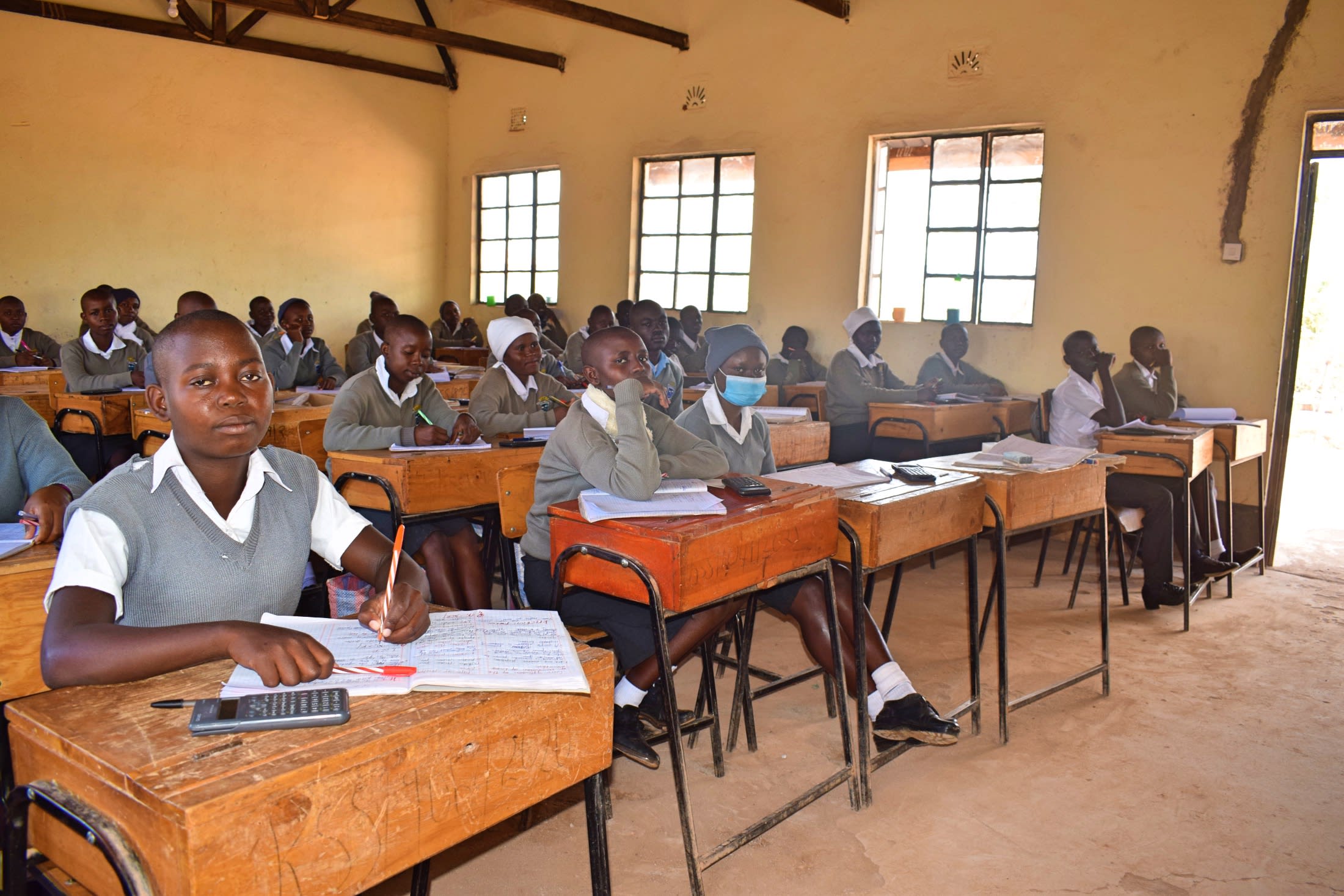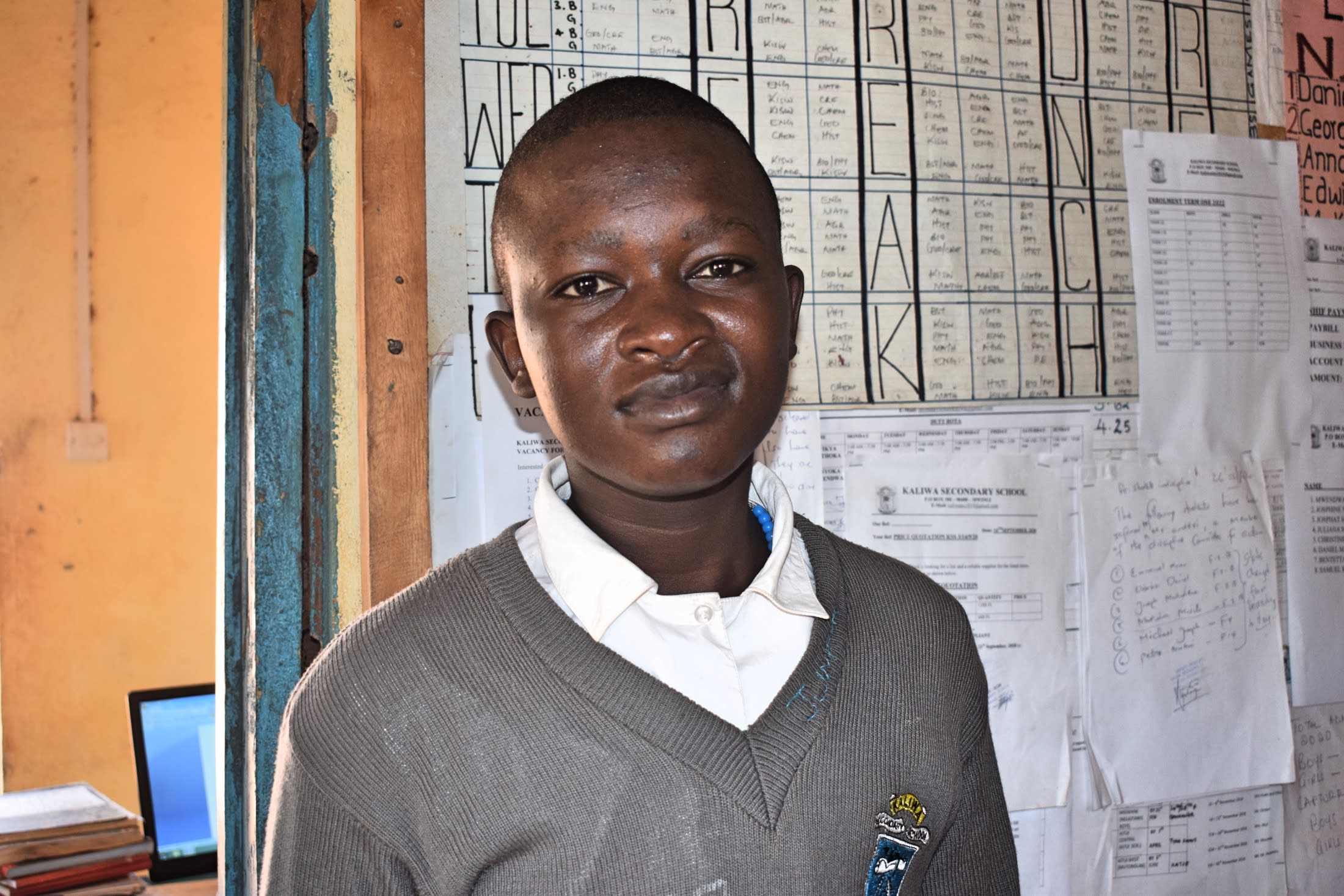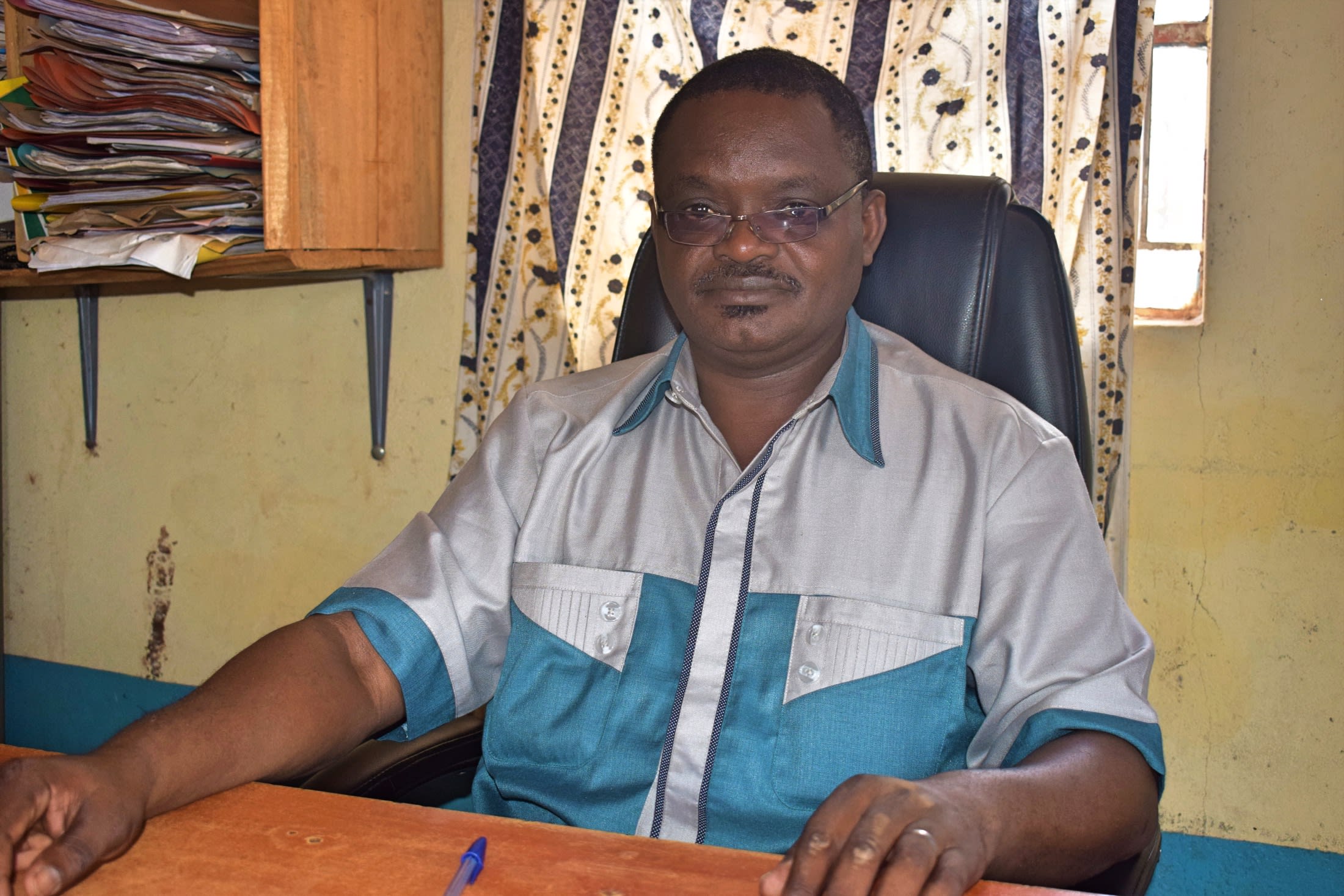At Kaliwa Secondary School, the school administration only expects the once-a-week water delivery to last for around two hours.
"After that, it's survival [of] the fittest," said our field officer Jefferson Mutie.
Since there are no natural water sources nearby, the school pays a hefty price to obtain water for its 490 students each week from a local "boozer" (water vendor). However, the company is not reliable. Their workers have broken the school's equipment, like pumps and tanks, on several occasions when filling up the school's water reserves. The delivery is often late without notice.

With many of the students boarding on the school campus, the water is stretched across as many uses as possible before it vanishes. Then, students wait for days at a time for the next delivery.
The water the school gets—whether it's from the boozer or the day students tasked with toting a full jerrycan to school each day—is from unknown sources, and is therefore of questionable quality.
"Some students often complain about stomach pains, while others have dysentery," said Jefferson. "We are also not sure about the water day scholars to take from home. The water from boozers isn't very safe at all."
As you can imagine, with so little water, it's difficult for both staff and students to accomplish much academically, let alone cook meals, bathe, wash their clothes, or wash their hands.

"Life in school has been not as good as I expected due to [the] water scarcity," said 17-year-old student Junior M (pictured above). "Due to water rationing, at times I find myself wearing clothes not being washed for days. Also, I skip bathing one or two days a week. My attention in class is low due to overthinking about where to get water. In our dormitories, we often get into arguments with students related to water."

This situation weighs heavily on the school's principal, David Mwangie (shown above). "Personally, I do not have peace in my life," David said. "Looking at students going for days without water in the school to drink or wash their clothes gives me a migraine. It calls for proper organization and sacrifices to get water for the school. If I miss water, I miss peace."
A reliable source of water on school grounds will improve the living standards of the students and lessen their daily burden.
Rain Tank
We will build a 104,000-liter rain tank for this school, making the others look tiny in comparison. Because of how rarely it rains in Southeastern Kenya, this tank's large volume is designed to store as much water as possible during the seasonal rains, making more water available through the dry months. This water will benefit the students, teachers, and supplementary staff.
Parents will mobilize the materials needed for construction, including sand, stones, and water. They will also lend their strength and time to help with the construction. We will complement their materials with a skilled artisan to lead the project in addition to providing the tools, lumber, metal, cement, and gutter system.
As soon as the tank has time to cure, it can begin collecting rainwater for the school's use.
Training
We will train students and staff on sanitation, hygiene, and other topics for 1 day. Those in attendance will form a school health club that will promote good hygiene and sanitation practices both at school and at home. They will learn all of the steps to proper handwashing, how to treat water, and how to keep their environment clean. The school will also be taught how to best oversee and maintain their new rain tank and handwashing stations.
Handwashing Stations
A total of 3 handwashing stations will be installed upon the project’s completion and before training. These are 1,000-liter plastic tanks fitted with 3 taps each, allowing 9 students to wash their hands at once. The student health club and school management will be responsible for making sure the tanks are filled with water and that a cleaning agent such as soap or ash is always available.





 Rainwater Catchment
Rainwater Catchment
 Rehabilitation Project
Rehabilitation Project

























